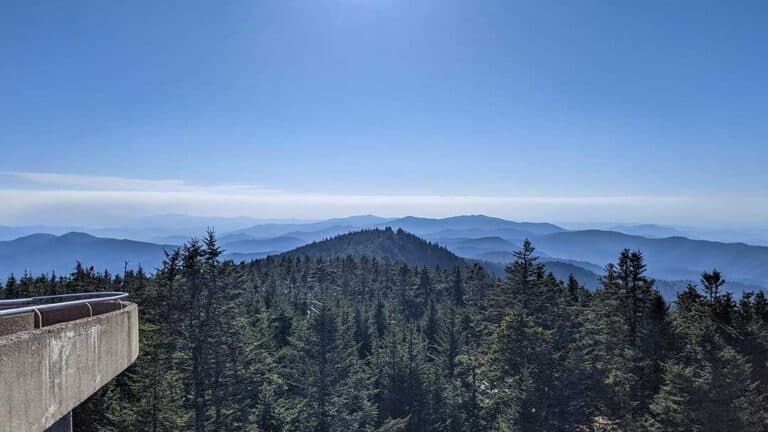Mount Mitchell State Park Expands on 100th Birthday
Mount Mitchell—North Carolina’s oldest state park—turns 100 this year. To celebrate, the state park will more than double in size. Over 2,744 acres will be added to the park’s northern boundary by The Conservation Fund, a nonprofit that has purchased the acreage and plans to transfer ownership to the state. The land was purchased through grants, bargain sales, and private donations. Mount Mitchell is the highest peak in the East at 6,684 feet, and each year, the park draws over a quarter-million visitors.
A.T. Hiking Fugitive Set for Sentencing
A year ago FBI agents arrested James Hammes at the annual Trail Days festival in Damascus, Va. It certainly came as a surprise to some within the Appalachian Trail community who knew Hammes as a bearded hiker with the trail name “Bismark.” It turns out he was an accountant wanted by the authorities for embezzling millions from the Pepsi-Cola bottling company that employed him in Cincinnati. Hammes spent approximately six years hiding out on the trail, but after being apprehended he pleaded guilty to wire fraud and agreed to pay back $8.7 million. For his cooperation in explaining his scheme that lasted 17 years, authorities dropped another 74 counts of wire fraud. Hammes was scheduled to be sentenced in March, but the date his fate will be revealed was moved to June 1. He could face a maximum of 20 years in federal prison.
Charleston Receives Grant to Prep for Rising Sea Levels
The coastal city of Charleston, S.C., received more than a half-million dollars to prepare for rising sea levels. According to an AP report, the federal grant, which came from the National Oceanic and Atmospheric Administration, was awarded so governments in Charleston and additional surrounding towns located near the Atlantic Ocean can make infrastructure improvements to be ready for potential flooding from predicted elevated water levels.
Big Maintenance Backlog at National Parks
It’s no secret that national parks are underfunded, but it’s getting even worse. According to a report that came out in March, the 409 units of the National Park Service now have a deferred maintenance list that totals $11.9 billion, a record amount that’s up four percent from the previous year. In an interview with NPR, National Park Service Director Jon Jarvis said, “I need about twice as much money as I currently get to address our maintenance backlog.” Right now parks get approximately $3 billion annually from Congress, with more funds coming from entrance fees, concession sales, and donations. Some are suggesting the NPS consider private-public partnerships with restrictions to limit commercialization. Nearly everyone agrees that gridlocked Congress should put aside partisan rancor and fully fund our national parks.
Severe Bat Population Decline in Georgia
In the past decade, bat populations have been decimated throughout the Mid-Atlantic and Southeast regions. The cause: White Nose Syndrome, a deadly fungus that grows on the muzzles and wings of bats while they hibernate. Since the disease worked its way down from the Northeast nearly 10 years ago, it has continued to kill bats at an alarming rate. The Georgia Department of Natural Resources reports that the state is approaching a population decline of more than 95 percent, calling this possibly the worst wildlife loss in recorded history. Bats play an important ecological role, eating large amounts of insects every day. They save agriculture in the U.S. billions of dollars, as farmers count on them to eat certain bugs before they reach fruits and vegetables. Fewer bats could lead to even more pesticide use, which could cause an even greater range of environmental and health problems. Scientists are working on potential White Nose cures, including the use of a bacteria that’s successfully slowed fungus growth on fruit.
Underground 5K in Kansas
In late February, 299 runners ran a 3.1-mile course that’s 650 feet below ground. This took place at the Mine Run 5K, a new race that takes runners through the dark tunnels of the Hutchinson Salt Company Mine in Hutchinson, Kansas. With a wave start in groups of 30, runners used headlamps and followed a rope on the ground that marked the course through the pitch-black darkness. There were also volunteers at almost every one of the course’s 70 turns to help keep runners moving in the right direction. While no one got lost, Mary Grace Clements, executive director of the mine’s museum, told Runner’s World one runner had a panic attack.








